How to paint a room like a pro — follow these quick tips
Here’s how to paint a room in nine easy steps to get stunning results
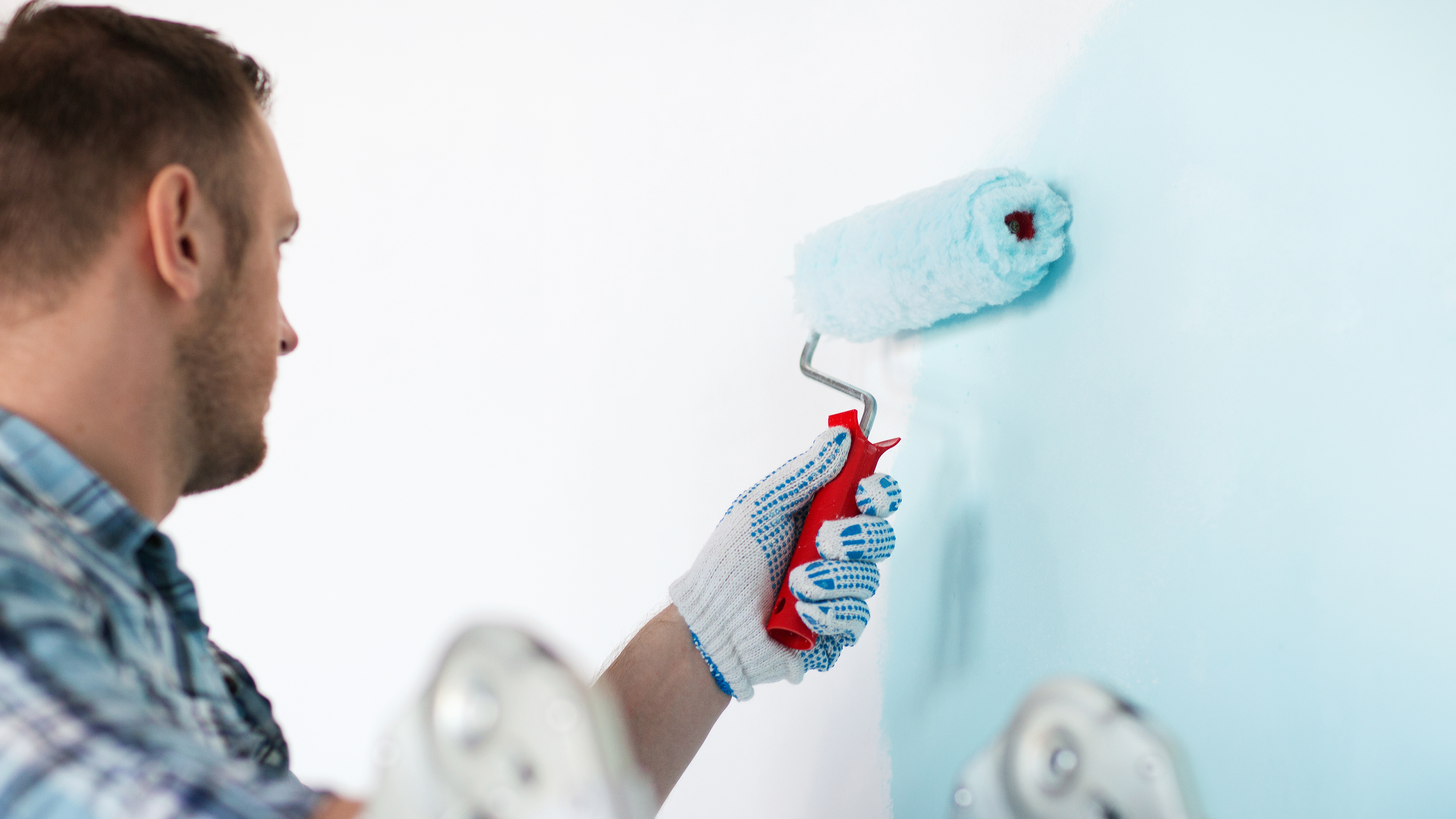
If your room looks dated or in need of a makeover, knowing how to paint a room like a pro can make all the difference. A fresh coat of paint is an affordable way to refresh a space, brighten up a dull room and give it an instant uplift.
What's more, painting a room is a quick project we can easily tackle ourselves without calling in the professionals, saving us extra cash.
While it may seem like a simple task, there are some tips and tricks of the trade to know before you start. Common mistakes can often happen without the right preparation, so it’s vital to know how to paint a room properly to get those professional results.
So whether you fancy a fresh color for or simply want to revamp a tired-looking room, here’s how to paint a room like a pro in nine easy steps.
You might also want to check out these 7 clever painting hacks to save you time, just avoid these 7 painting mistakes and how to choose the best paint for your interior finish — from durability to sheen.
How to paint a room
1. Prep the room for painting
Painter's tape
Drop cloths
Putty knife
Caulk
Paint brushes (both angled and straight)
Paint roller
Paint tray
Stir stick
Paint swatches
Paint
— First, move furniture and fixtures out of the room or away from the walls into the center of the room. Cover furniture with protective drop cloths.
— Then, cover the floor with drop cloths or old bed linen to protect it from paint drips and splatters. Canvas sheets are more durable and absorbent than plastic drop cloths , but the plastic sheets are less expensive and more accessible. We recommend this Canvas Drop Cloth ($24, Amazon) which is both heavy duty and durable.
Sign up to get the BEST of Tom's Guide direct to your inbox.
Get instant access to breaking news, the hottest reviews, great deals and helpful tips.

— Remove outlet and light switch plates to prevent any paint getting on them, and cover what remains with painter’s tape.
— Ensure there is proper ventilation before painting to eliminate the build-up of paint fumes by opening a window or door.
2. Repair the walls
— Check the surface of the wall for any cracks, holes or dents that need to be repaired. Apply caulk to fill in any cracks or holes with a putty knife, and let it dry completely. We can recommend Dap 18128 Alex Plus Acrylic Latex Caulk Plus Silicone 5.5-Ounce - 4 Pack ($21, Amazon).
— Once dry, lightly sand the area with a fine 220-grit sandpaper or sanding sponge to smoothen the surface. Then, wipe the surfaces clean with a damp cloth and allow to dry again.
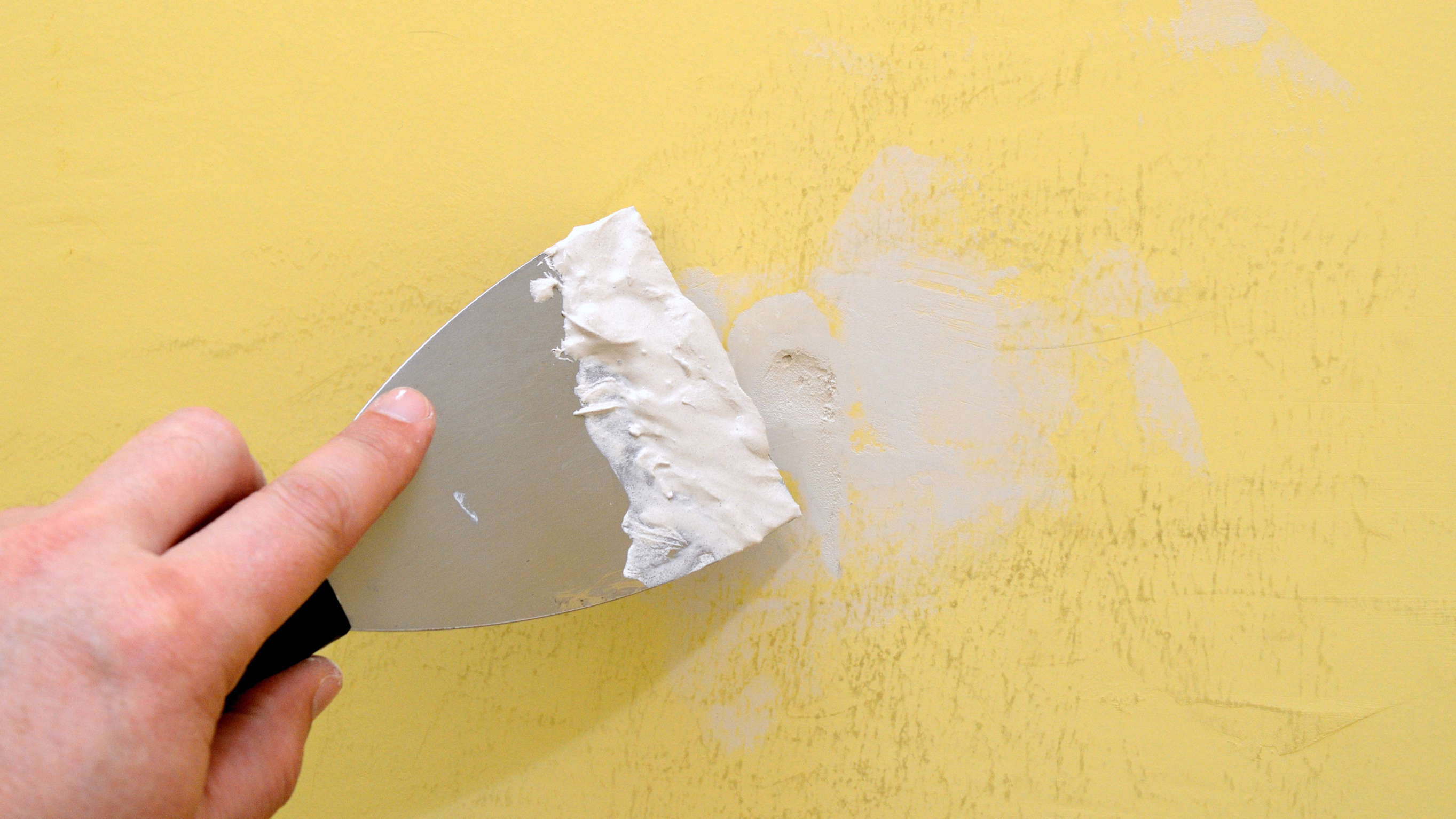
3. Apply painter's tape
— Next up, apply painter’s tape around your skirting, windows, light sockets and doors to prevent paint bleeding through.
For a non-textured surface, ensure you mask it off where it meets the edge of the wall, pressing down firmly along the edge. We recommend ScotchBlue Sharp Lines Painter's Tape ($24, Amazon) or Frogtape 1358463 Multi-Surface Painter's Tape with Paintblock ($5, Amazon) to do the job.
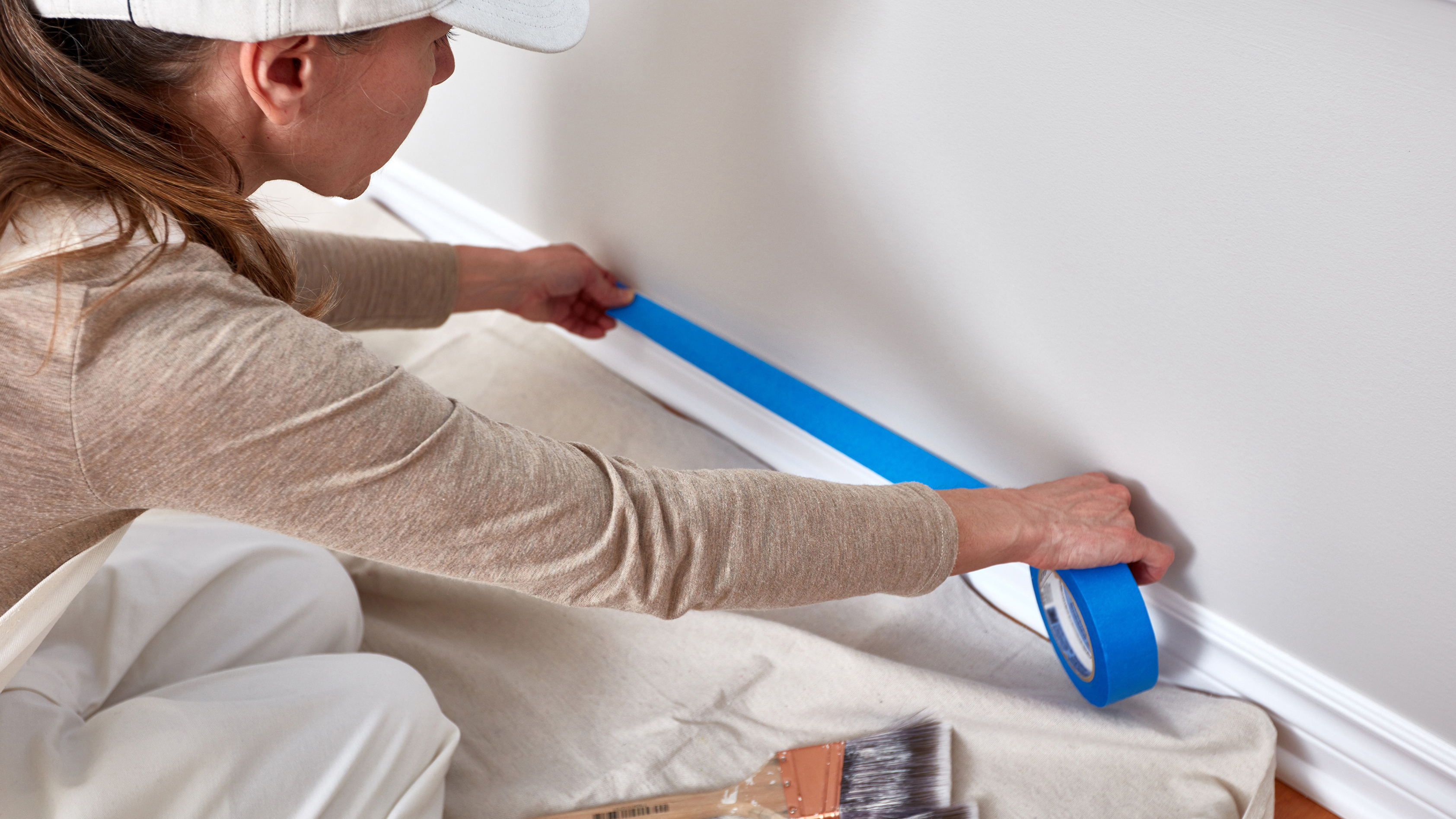
4. Sample the paint
— Test a sample of the paint first to give you an idea of how the color will look. Often the color charts look different to reality, so paint two coats of your chosen color in a 12 x 12 inch square to see what it looks like on your wall.
— If you don’t want to test directly onto the wall, you can paint two coats on a foam board and tape it to the wall. This will also save you the hassle of repainting a room if you don’t like the final color.
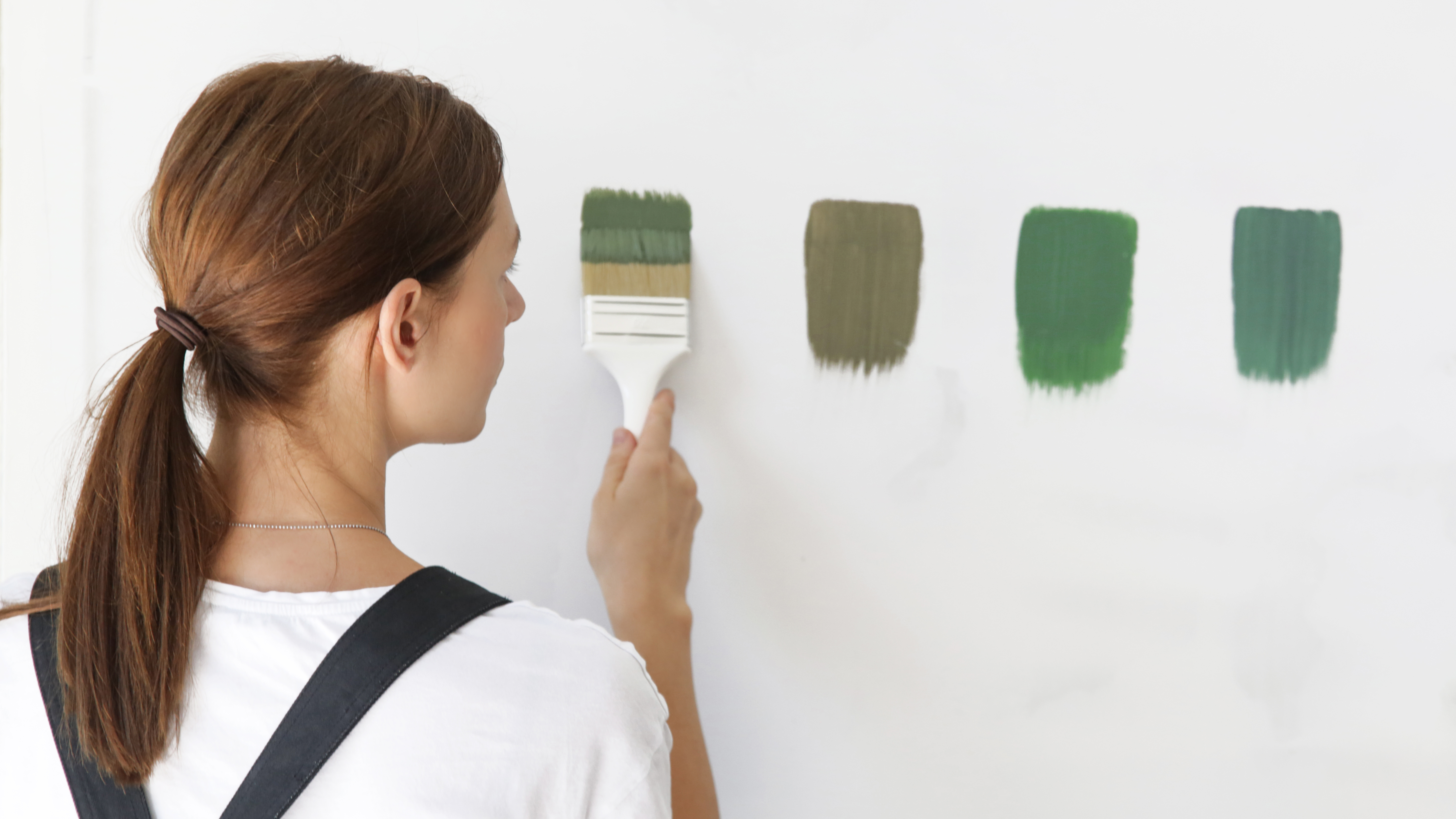
5. Prime the walls
— You’ll need to prime your walls before painting, especially when you’re painting over a dark color with a lighter tone or want to hide unsightly stains. Using a good quality primer is essential; it will help seal the wall and prevent mold.
— First, dip a paint brush into the primer and “cut in” 2- to 3-inch bands of primer around the edges, corners and frames of a room. Then, pour the primer paint into a tray, dip your roller brush in until it’s covered, roll off the excess, and start painting the primer onto the wall. Professionals recommend to work top to bottom, followed by rolling back and forth across the wall in V or W-shaped strokes until the section of wall is covered. This will ensure good coverage.
— Leave to completely dry before painting. Most latex primers can take between 30 minutes to one hour to dry, while oil-based primers can take up to 24 hours to fully dry. Follow the given instructions for time to dry.
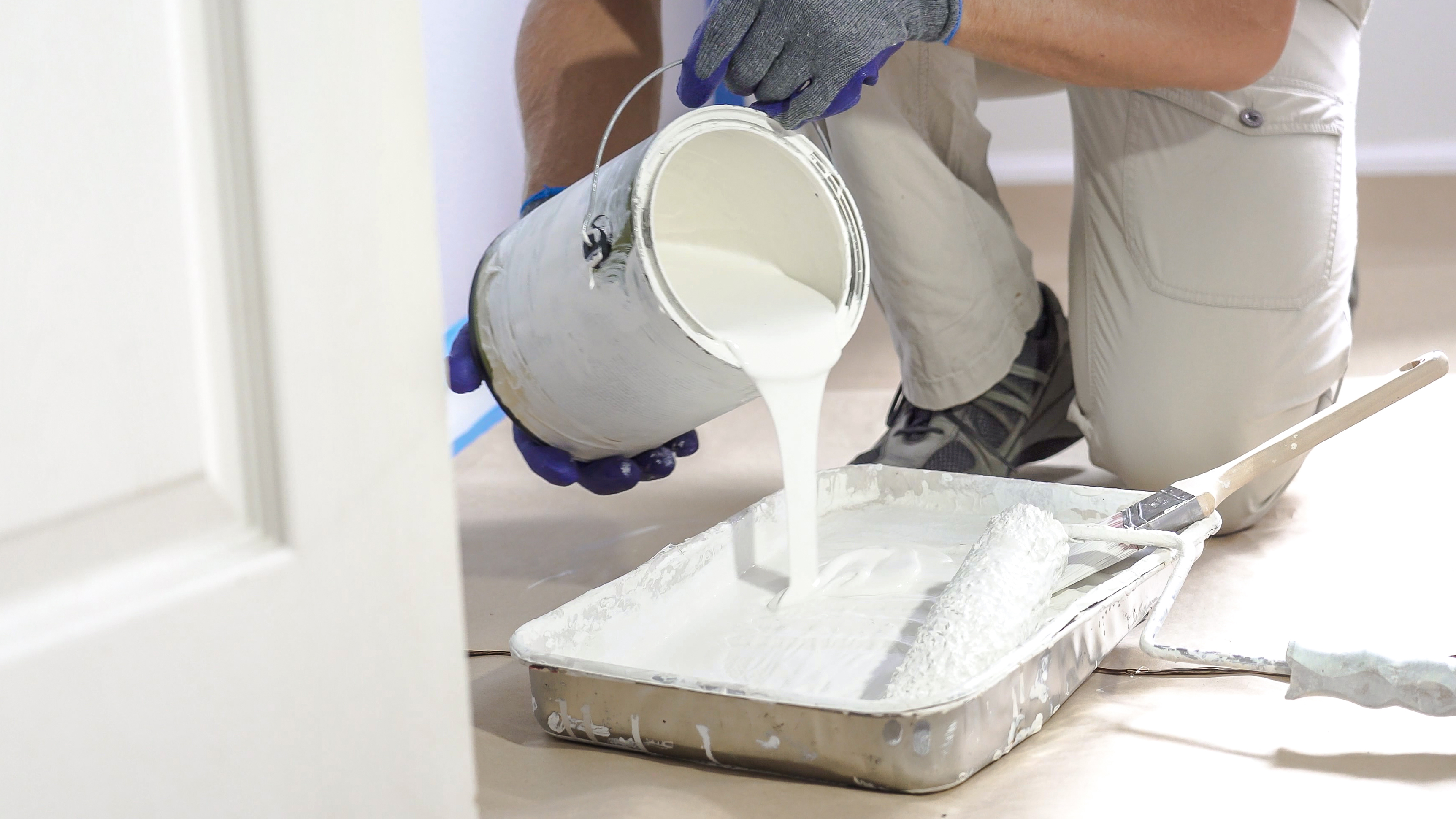
6. Sand your wall primer
— When the primer is dry, lightly sand the wall with a fine grit sandpaper on a block to get rid of bumps or ridges and create a smooth surface. We can recommend Fandeli Sandpaper Sheets ($13, Amazon), or MICHENG 6PCs Sanding Blocks ($8, Amazon).
— Once the area is smooth, wipe the wall clean with a damp towel or sponge and allow it to dry.
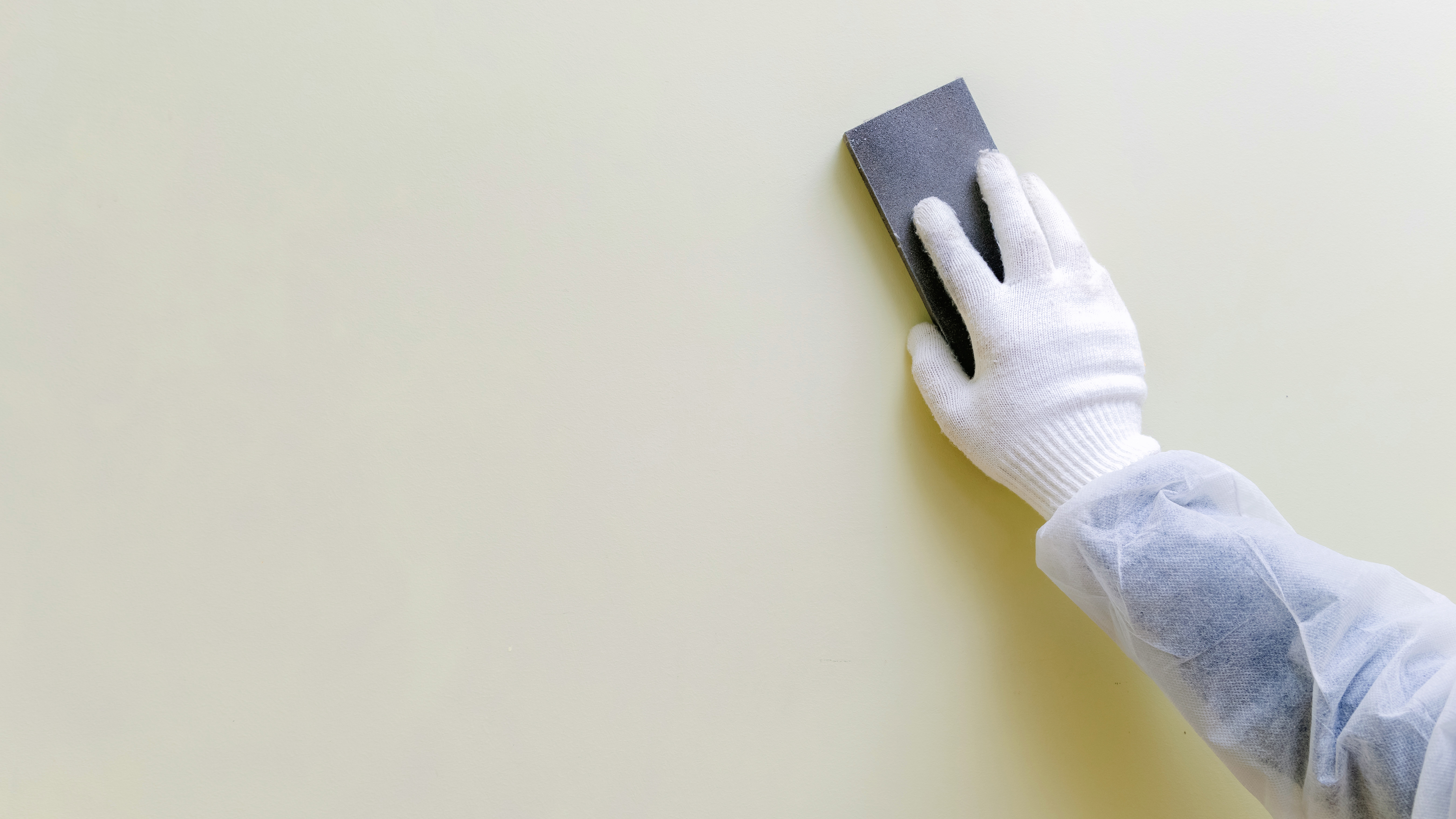
7. Mix the paint
— Open the can of paint and always mix the paint thoroughly with a wooden stir stick before use. This is because the ingredients tend to separate, especially after sitting for a long period of time. This will ensure that the color and finish will look consistent.
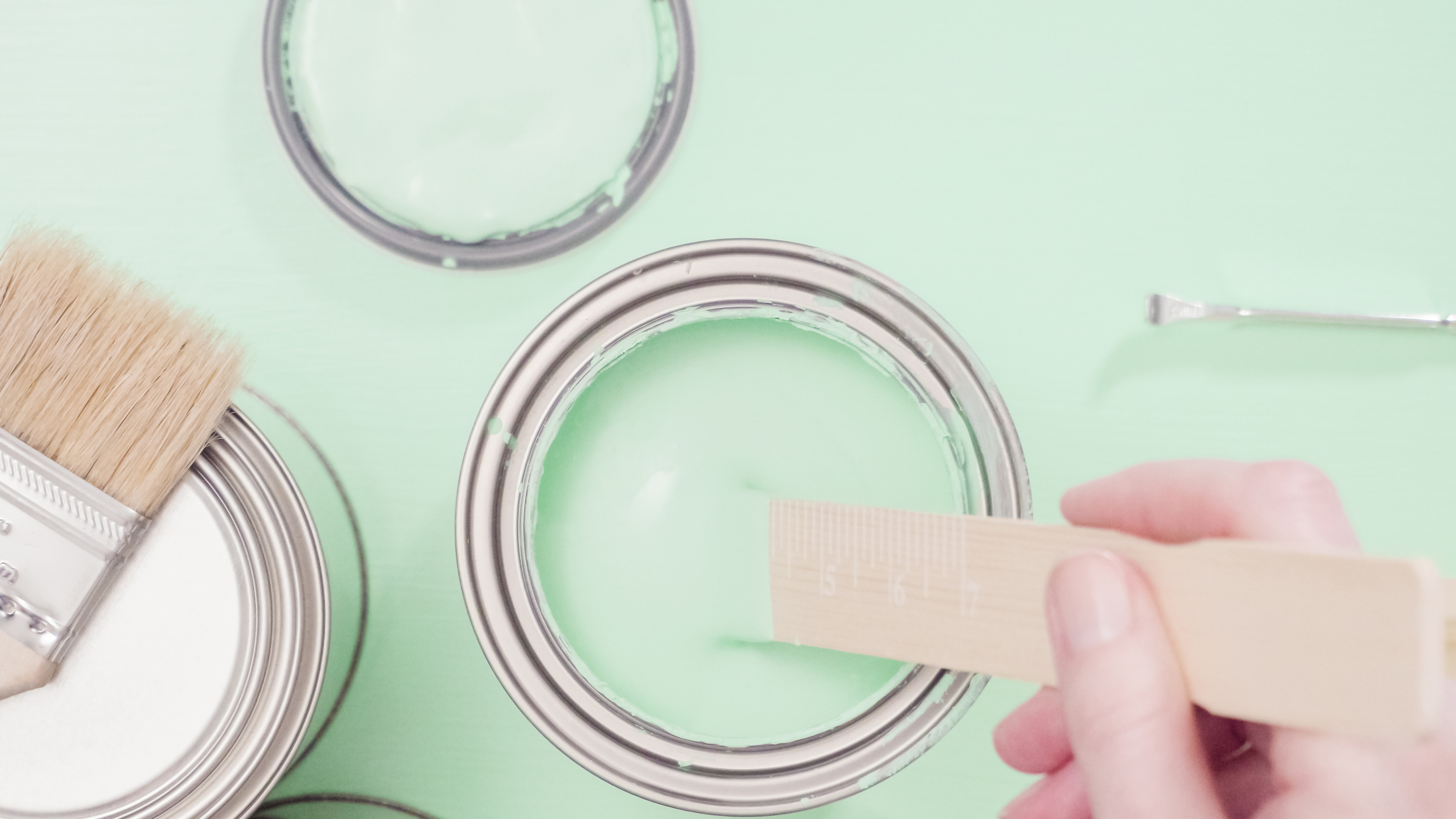
8. Paint your walls
After all the prep work, you can finally paint your walls with a roller brush and a paint brush.
— Start by using an angled brush to “cut in” with a two-inch painted line around the edges of shirting boards, door frames and the ceiling. Then, pour your chosen paint into the tray and fill to about ¼ of the capacity, before rolling your roller brush back and forth in the paint, and pressing off the excess.
— Using your roller brush, start working from the top to the bottom of the wall. Then roll back and forth across the entire wall in a series of V or W-shape strokes for a more even coat.
— Leave the first coat to completely dry (to the touch) before applying another. It’s recommended to paint at least two coats to get a more rich and vibrant color finish.
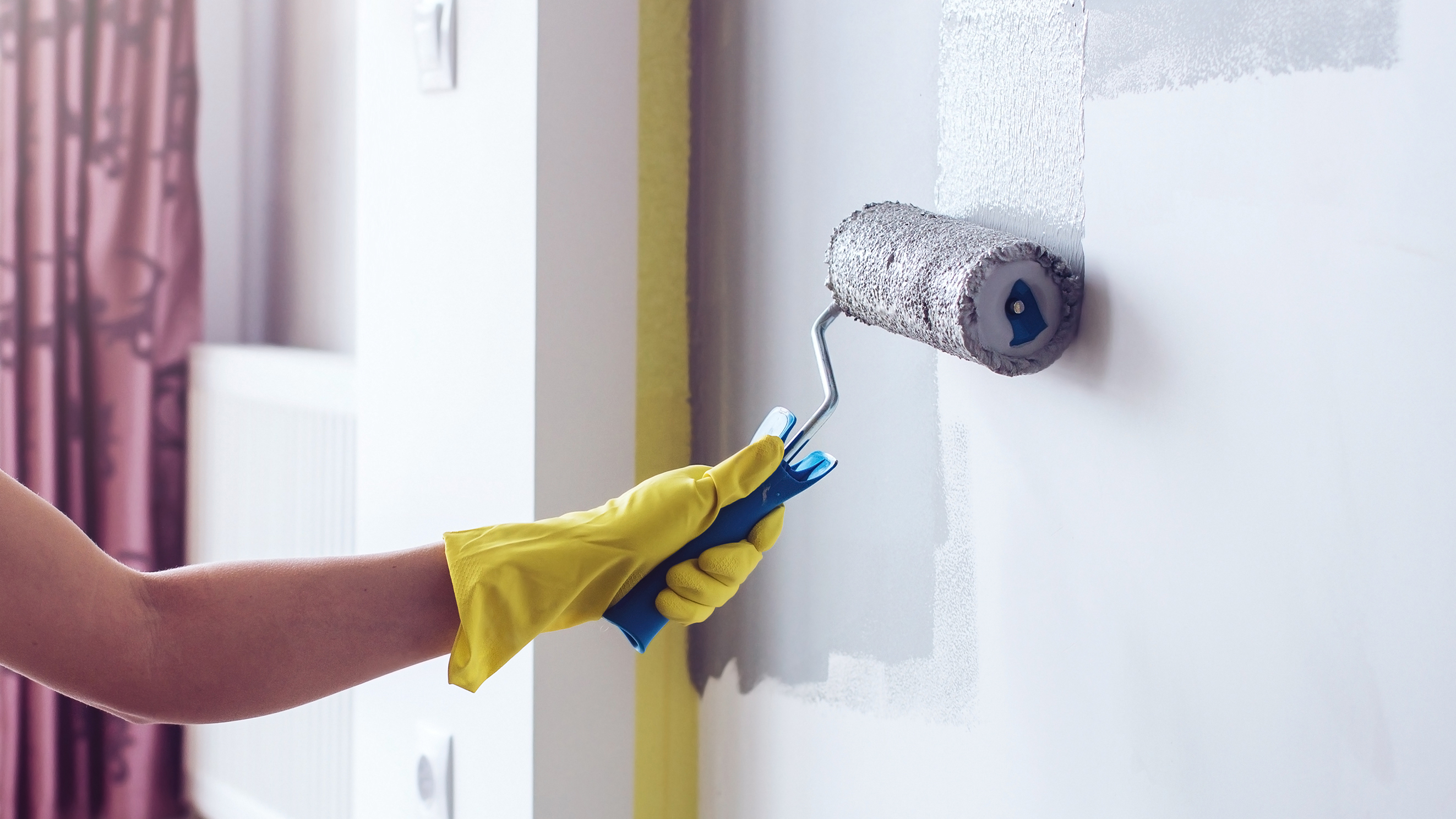
9. Clean up time
— Once your walls are painted and dry, remove the painter’s tape from around the walls and borders. Avoid leaving on for too long as small pieces of tape can break away and leave residue.
— Then, decant the tray's leftover paint back into the tin before sealing the can tightly. If it’s tricky to seal due to dried paint around the edges, tap the lid's edges gently with a hammer to close.
— Next, rinse the tray with warm soapy water and thoroughly clean your paintbrush and roller. Finally, leave the brush bristles and roller to fully dry before putting away.
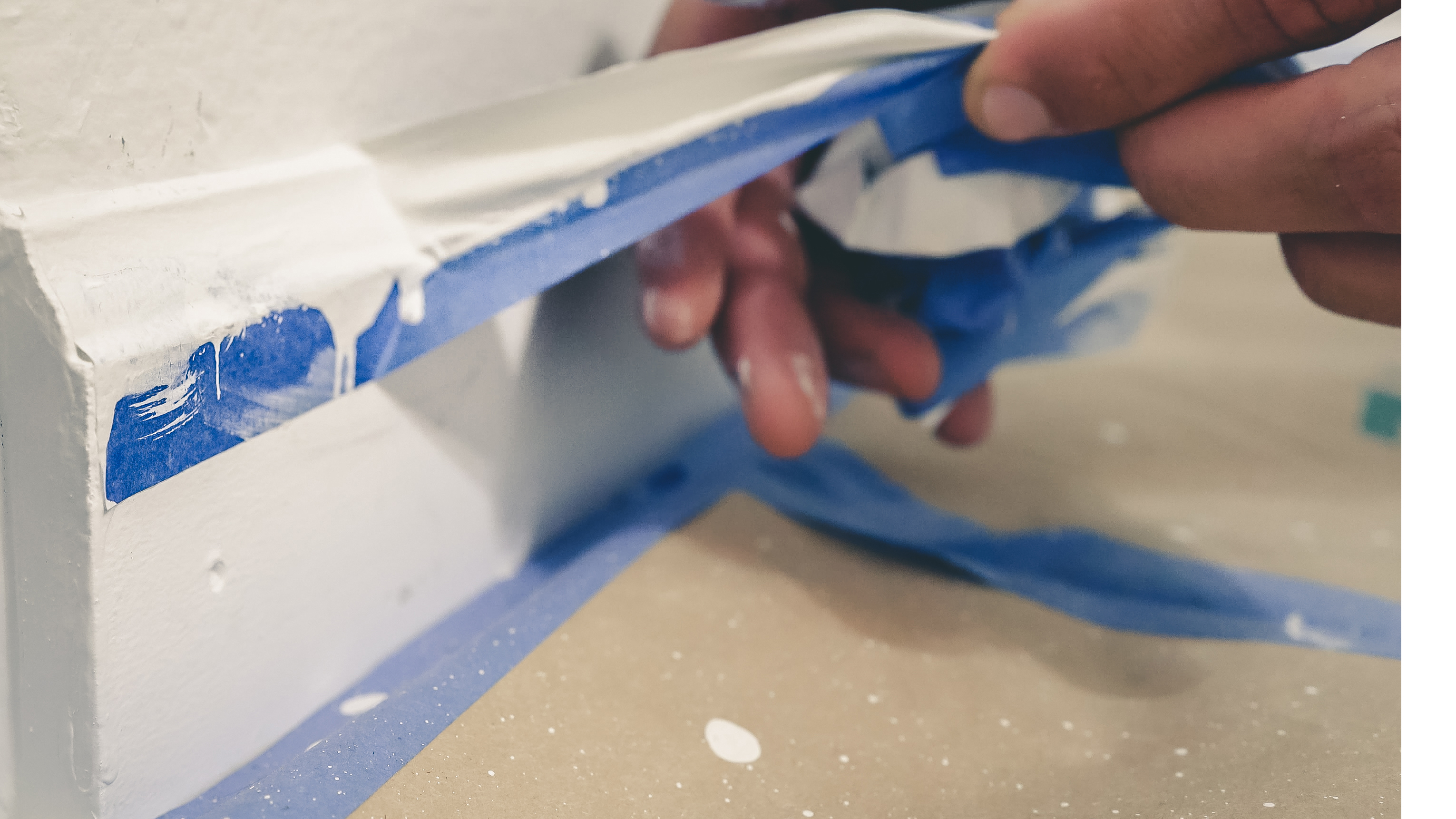
How long does it take for paint to dry?

Latex or water-based paints are usually dry to the touch after one hour and you can recoat within four hours. While oil-based paints take much longer and are dry to the touch between six to eight hours. In this case, you’ll need to wait 24 hours before you can recoat.
Be sure to check the instructions on the paint label to confirm specific dry times.
Before you start painting you might benefit from using a color wheel to help you choose a color palette — interior designers swear by this hack when designing a room.
- Here's how to wallpaper a room like a pro so you save a ton of money. Had an accident? Here's how to get paint out of the carpet, and if you want to maintain your walls, here's how to clean painted walls to remove stains.
- Deciding on which colors to paint your walls? Check out these paint colors that could make your home look cheap.

As the Homes Content Editor, Cynthia Lawrence covers all things homes, interior decorating, and garden-related. She has a wealth of editorial experience testing the latest, ‘must-have’ home appliances, writing buying guides and the handy ‘how to’ features.
Her work has been published in various titles including, T3, Top Ten Reviews, Ideal Home, Real Homes, Livingetc. and House Beautiful, amongst many.
With a rather unhealthy obsession for all things homes and interiors, she also has an interior design blog for style inspiration and savvy storage solutions (get rid of that clutter!). When she’s not testing cool products, she’ll be searching online for more decor ideas to spruce up her family home or looking for a great bargain!
